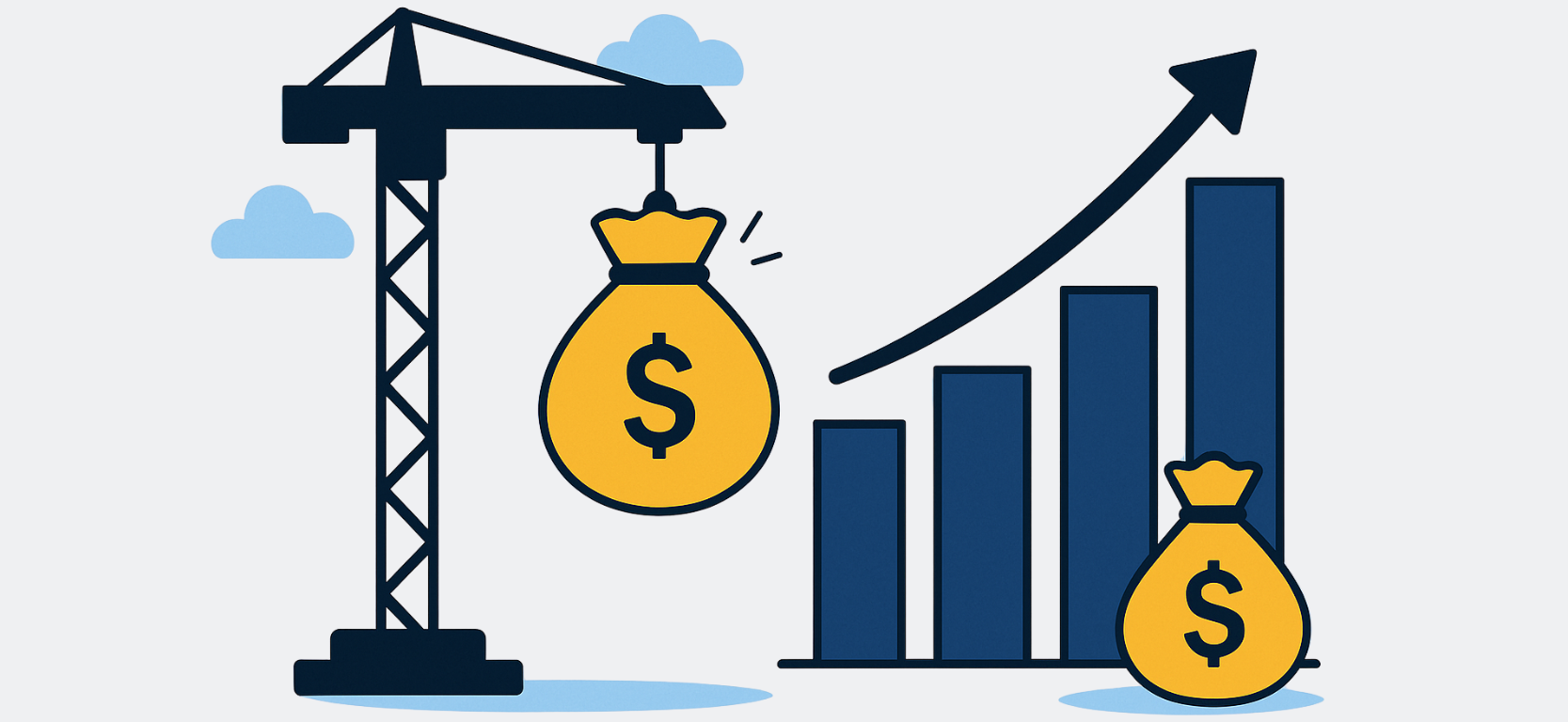Efficiency is addictive.
You launch a campaign. ROAS is solid. CAC is low. Margins look great.
So, naturally, you decide to keep things exactly where they are.
But here's the truth: if you're optimizing for efficiency, you're probably sacrificing growth, and not realizing how much it's costing you.
In ecommerce, what looks like smart financial control can actually be the biggest drag on your long-term revenue and brand value.
Efficiency Isn’t Bad - Until It Becomes the Goal
Let’s start with a disclaimer:
Yes, efficiency matters. We want smart acquisition. We want to protect margins.
But when efficiency becomes the primary metric of success, that’s when growth stalls.
Here’s what that looks like:
- “Let’s keep spend capped until ROAS dips.”
- “Our CAC is higher this month. Pause everything.”
- “We don’t want to break our margin model.”
The intention is good. But the result? You shrink your acquisition volume. You reduce your future customer base. And you repeat the same campaign logic quarter after quarter, while competitors pass you by.
Every time you say “let’s hold here,” you’re losing out on future earnings.
The Hidden Cost of “Staying Efficient”
Let’s look at an example from the book:
|
Scenario |
ROAS |
Ad Spend |
Revenue |
Contribution Margin |
Customers |
|
High ROAS |
8x |
$20,000 |
$160,000 |
$76,000 |
2,133 |
|
Growth Play |
5x |
$38,000 |
$190,000 |
$76,000 |
2,533 |
|
Scale Play |
3x |
$95,000 |
$285,000 |
$76,000 |
3,800 |
Every single scenario has the same profit.
But by scaling and accepting a lower ROAS, the brand in Scenario 3 acquired 1,667 more customers, which is a massive asset for future growth.
That’s the opportunity cost of staying “efficient.”
Why Playing It Safe Feels Smart
It’s understandable. Most business owners bring personal financial habits into their company:
- “Don’t overspend.”
- “Cut unnecessary costs.”
- “Preserve margin.”
But growth doesn’t come from savings. It comes from strategic deployment of capital.
When you treat your ad budget like a bank account instead of a growth lever, you:
- Spend less than you should
- Limit your customer acquisition volume
- Shrink next month’s pipeline
And you don’t even realize it because the numbers look good.
The danger of efficiency is that it masks the cost of inaction.
The Budget Trap
Budgeting is critical. But when budgets are based on past performance and protected at all costs, they become shackles.
Here’s a typical mindset we see:
- “We’re budgeted at $50K/month.”
- “Last time we went over, ROAS dipped. Let’s not risk it again.”
- “Let’s hold this month’s spend where it is.”
Now imagine that extra $10K could have brought in 1,000 incremental new customers at breakeven CAC.
That’s $200,000 in future LTV lost… because the spreadsheet said “stay the course.”
The Real Risk Isn’t Overspending. It’s Underspending.
Most founders are worried about wasting money on underperforming campaigns.
But the bigger threat?
Not spending enough on campaigns that are working.
Every day you delay increasing spend on a profitable acquisition engine is a day you're missing out on:
- More customers
- More revenue
- More compounding returns
You might be protecting this month’s profit, but at the cost of next quarter’s growth.
How to Know if You’re Playing It Too Safe
Ask yourself:
- Are we keeping ad budgets static even though performance is strong?
- When was the last time we tested our true scalability?
- Are we celebrating high ROAS while customer acquisition stays flat?
- Is “efficiency” being used as a reason not to invest more?
If yes, you’re optimizing for comfort, not growth.
Efficiency Doesn’t Build Big Brands. Scale Does.
Efficiency is easy to understand, and easy to sell to stakeholders.
But it doesn’t build momentum. It doesn’t grow LTV. And it doesn’t drive enterprise value.
What does?
- Acquiring as many profitable customers as possible
- Maximizing contribution margin across a broader base
- Playing offense, not defense
So if your ROAS is high, CAC is stable, and margins are intact…
the real question isn’t: “Can we keep this up?”
It’s: “What’s the cost of not pushing further?”
Explore Human’s Ecommerce Marketing Services
We help brands move beyond “safe” spending to scalable, profitable growth by testing the limits of what your acquisition engine can really do.
👉 Partner with Human to unlock your growth ceiling
Read the Book: Why High ROAS Is Bad for Your Ecommerce Business
If you’ve been stuck in a budget-first, ROAS-driven mindset, the book will show you a better way to scale.
📘 Get the book → High ROAS Is Bad For Your Ecommerce Business



